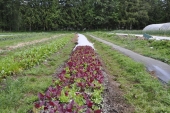




Tyler Ludens wrote:Keep in mind fruit, especially apples, grown from seed might not be fresh eating quality, but might be ok for making hard cider.
If you want predictably edible fruit, you might want to invest in known cultivars of fruit, which can be expensive per tree ($30 for instance, per tree).
For general information about growing a food forest, I can't too highly recommend Geoff Lawton's Food Forest DVD.
Steve Farmer wrote:
Heinrich Kegeldank wrote:If I had to establish a 2-acre food forest with all kinds of plants, would it be best to plant everything right into the ground?
It depends.
I can't plant directly into the ground because of these things:
- lizards, rabbits & goats will eat the young trees
- there is not enough rainfall and the plot is 20 mins drive from where I live
- the seeds I plant do much better with assistance (on wet paper towels in a plastic tub in the sun, checked every day)
- some seeds have low germination rate. I could plant 3 seeds in a location but some locations would get 3 trees and some zero
Another problem I don't have but you might is frost killing young trees that aren't in pots inside over winter.
I could plant more seeds directly in the final spot to try to fight these problems but experience tells me the lizards would eat them all, and anyway I would have to water them every day when they are young.
Your conditions are different so you might be ok. Why not plant some directly in the ground but also plant some in pots as an insurance?

Russell Olson wrote:Dandelions, purslane, and mallow would have to be additions too. depending on your tastes garlic chives might be a good one, although the smell of crushed garlic chives might be a bit much for a lawn, same with mint I suppose.